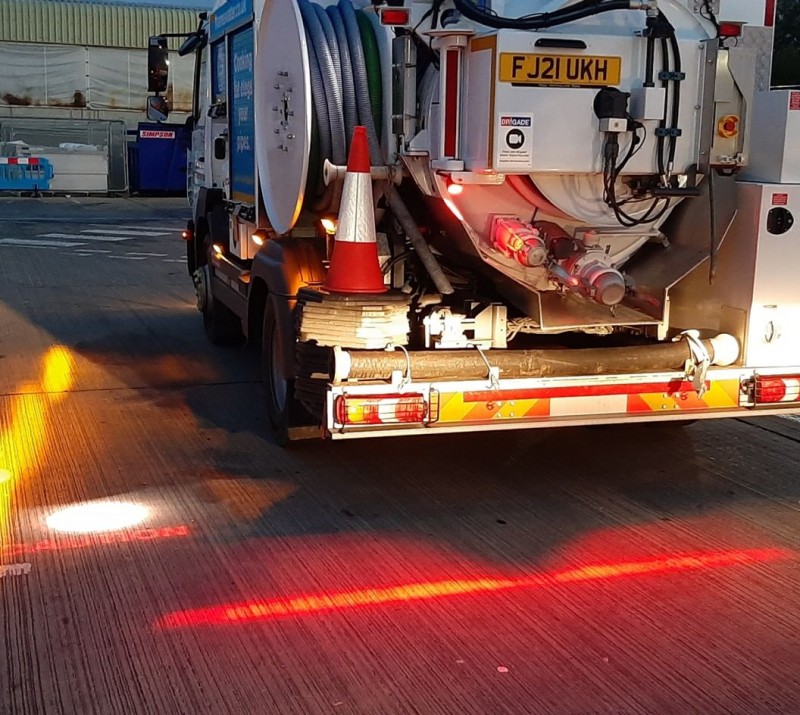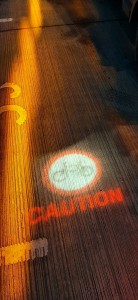Shining halo backs road safety as Lanes boosts driving skills

Drainage and wastewater service specialist Lanes Group plc is using a roadway lightshow to warn other road users, and cyclists in particular, to keep a safe distance at road junctions.
Its division delivering services for Thames Water is testing the system that activates as the HGV vehicle turns left at junctions – the moment, collision data shows, cyclists are at most risk.
A second version of the same technology, fitted to one of Lanes’ biggest vacuumation tankers, creates a halo of light around the HGV warning other site workers not to come any closer.
The Halo trial is one of a number of initiatives developed by the same Lanes division. It has also launched driver awards based on data from a new vehicle tracking system and a slow vehicle manoeuvring training course to improve safety while HGVs are reversing and operating in restricted space.
Trials of the Cycle Lane and Halo light systems, developed by UK company FHOSS, are underway, with a view to fitting the devices to all HGVs operated by Lanes for Thames Water as a new fleet of vehicles comes on stream over the next 12 months.
Andrew Smith, Fleet Manager for Lanes Group’s wastewater network maintenance contract with Thames Water, said: “Cyclists are most at risk from vehicles turning left, especially in the dark.
“The Cycle Lane lighting system helps drivers use their vehicle cameras to see cyclists that come up next to them. It also projects a red line and a cyclist no entry sign onto the road at the rear of the vehicle to encourage cyclists to stay back at junctions.
“The Halo perimeter lighting has been very much welcomed at worksites our trial vacuumation tanker goes to. It creates a band of LED light two metres from the vehicle all the way around it and co-workers quickly get the message it’s there to create a safe boundary.”

A new Samsara vehicle tracking system, introduced by Lanes across all UK operations in 2021, has significantly improved the quality of data gathered about driver performance and behaviour.
This data has been used by Andrew Smith and his transport team to launch a Driver of the Year competition – with the best drivers in each of five regions winning trophies and retail vouchers.
Working with health and safety colleagues, he has also developed a vehicle slow manoeuvring training course to improve the safety of vehicles as they are being driven at low speeds at depots or on worksites.
The training is delivered by regional transport advisors and technical specialists who have been put through RoSPA’s advanced driver course and driver assessment course, so they can also provide ongoing coaching and mentoring where it is helpful.
Andrew Smith explains: “Slow speed incidents can still put people at risk and cause costly damage. Our whole approach has been to encourage all colleagues to be more aware of risks, and take pride in setting impeccable vehicle safety standards, both on roads and off them.
“We’re very pleased to say that, taken together, these initiatives are already making a difference, with driving-related insurance claim costs falling significantly over the last 12 months.
“We’re confident the safety of road users, our colleagues and work partners is being enhanced as a result.”







